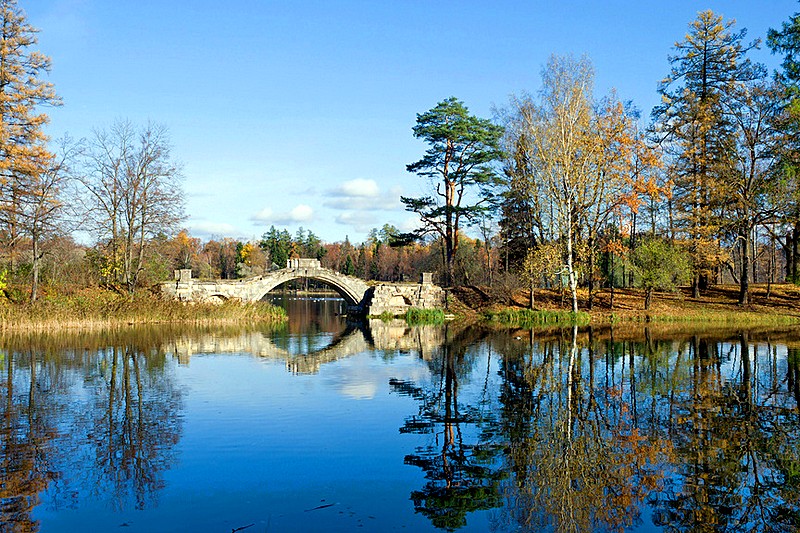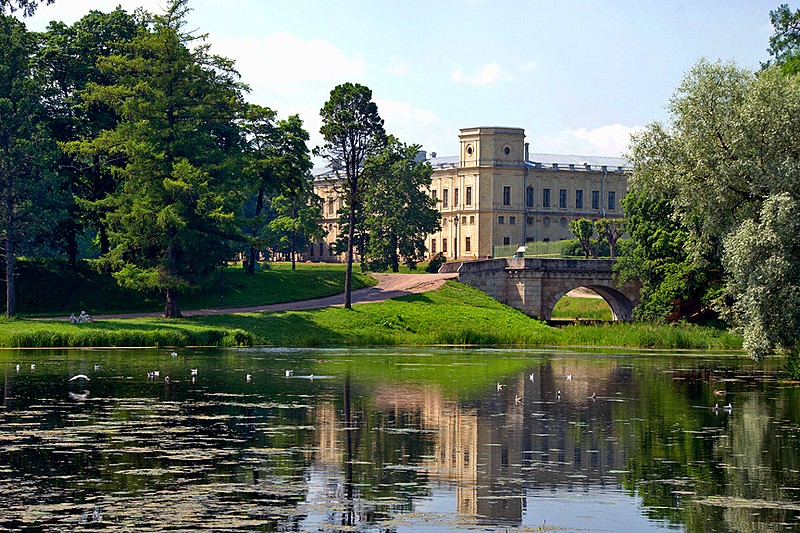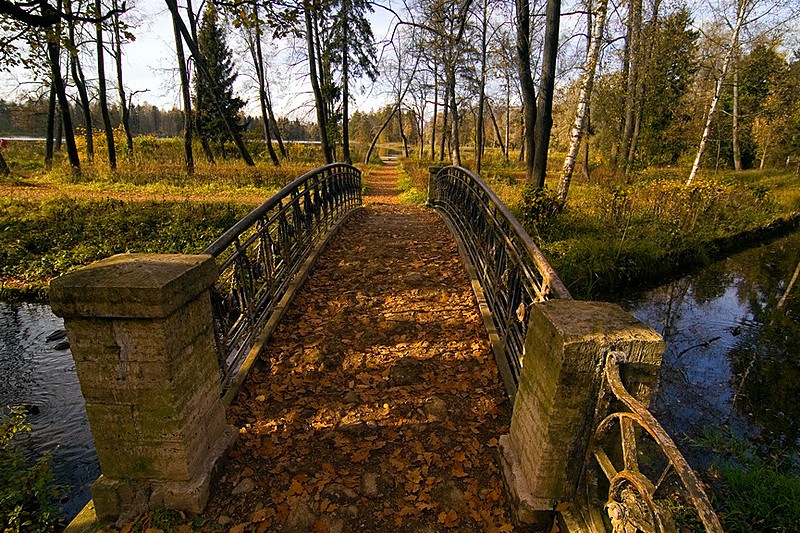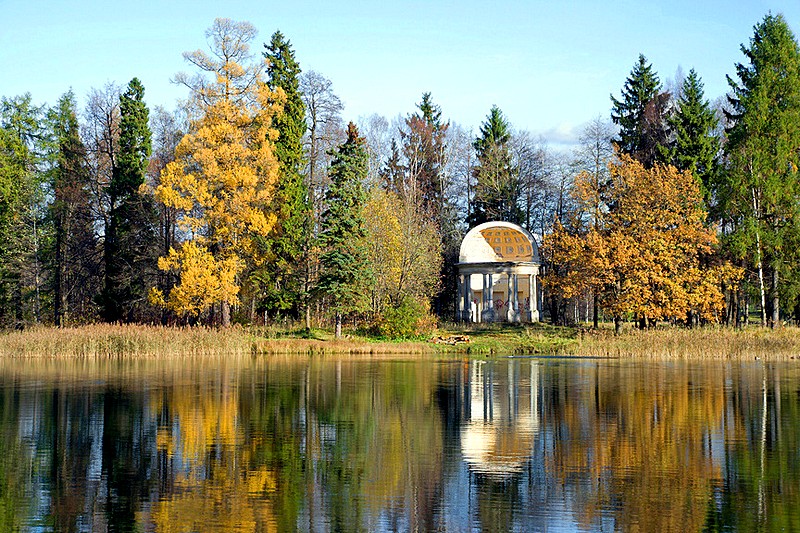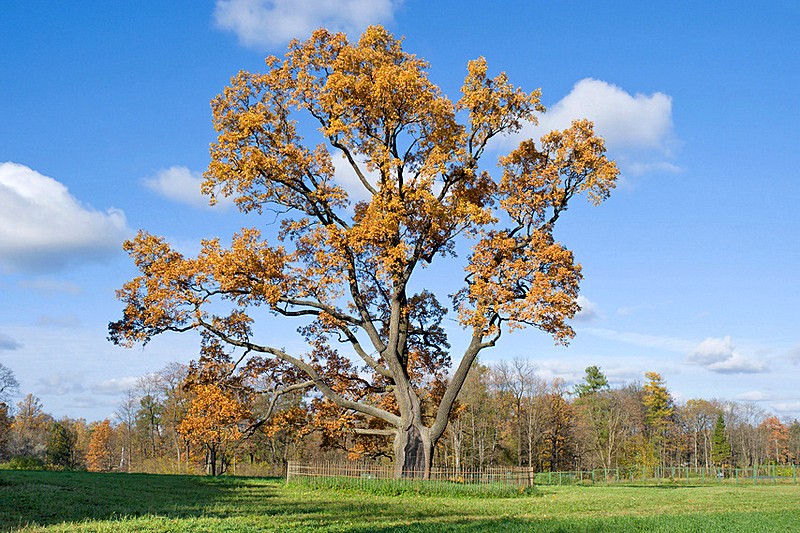Gatchina Park
The park at Gatchina was established at the same time as the Grand Palace, and its development followed much the same pattern as that of the building. Originally laid out by Antonio Rinaldi for Count Grigoriy Orlov, who boasted of his fine landscape garden in letters to Jean-Jaques Rousseau and used the park to indulge his favourite pastime, hunting, the Gatchina Park was developed further for Emperor Paul by Vincenzo Brenna, who added most of the park's stone follies and gave the picturesque wilderness a slightly more formal appearance.
Today, the park is slowly being returned to its 19th century magnificence, but several of the historical buildings are still in ruin, the formal gardens have all but disappeared, and the extensive parkland is for the most part charmingly overgrown.
The park spreads out behind the palace, and is centered on three elongated lakes, the Black Lake, the Silver Lake, and the White Lake. Of the buildings from the 18th century that have been fully restored, the Birch House is probably the most interesting. Built in the 1780s, reportedly as a gift to Paul from his wife Maria Fedorovna, the folly resembles a woodpile from the outside, but inside has extraordinarily ornate interiors filled with exquisite stucco work and magnified with ingeniously positioned mirrors. A decade after it was built, Brenna added a magnificent neoclassical gateway called the Mask Portal.
Also of interest, Brenna's Pavilion of Venus, which was inspired by Paul and Maria Feodorovna's visit to Prince Conde's residence at Chantilly, is made entirely of wood, but resembles a stone classical temple. It also has an extremely elegant interior. It is the main feature of the Island of Love on White Lake, one of the most picturesque corners of the park. Several artificial islands were created in Brenna's landscaping, and they are connected by fine stone bridges in classical style.
| Open: | Daily |
|---|---|
| Admission: | Free |
| Photo and video: | Free |
| Accessibility note: | Full wheelchair access to the park is available. |

